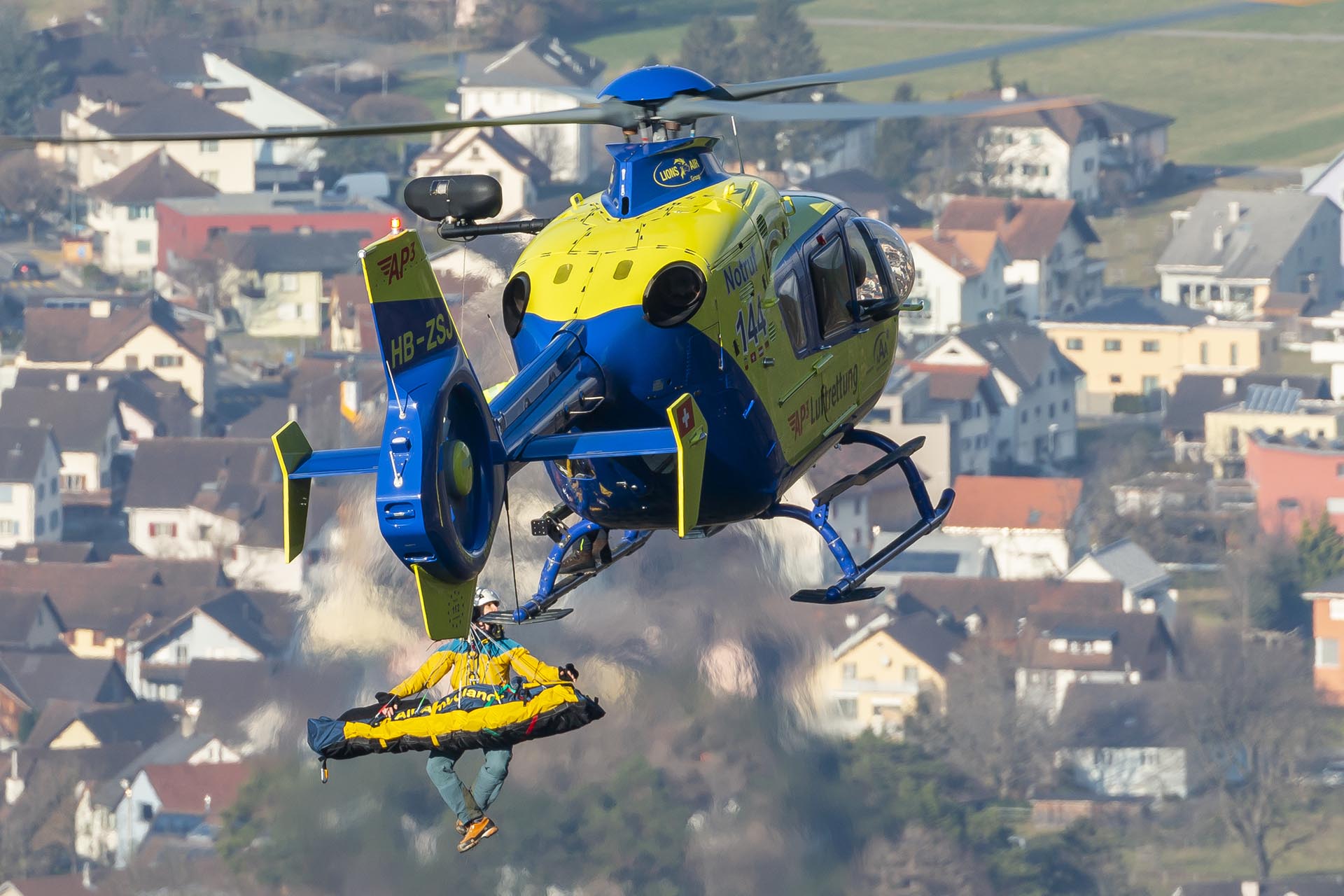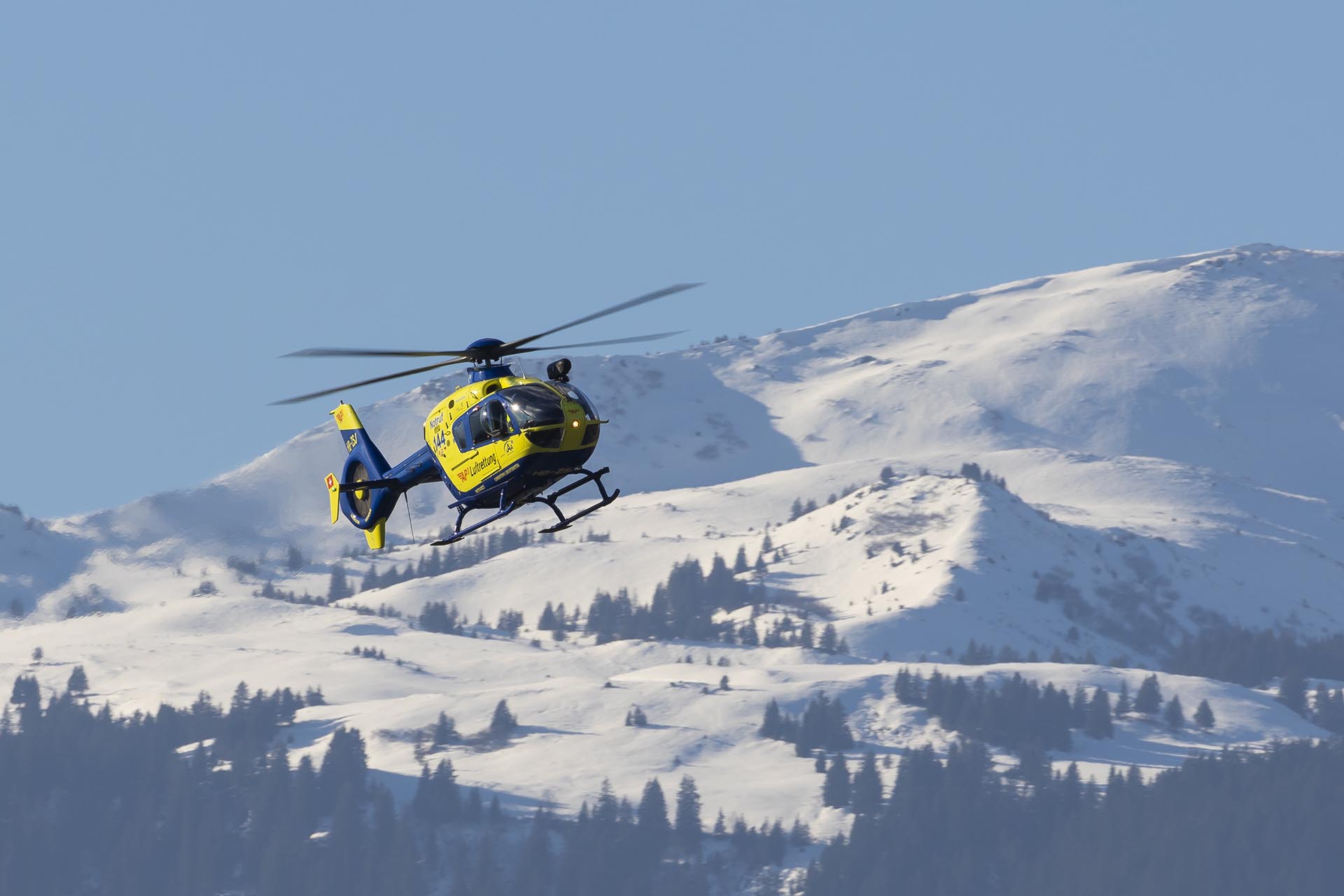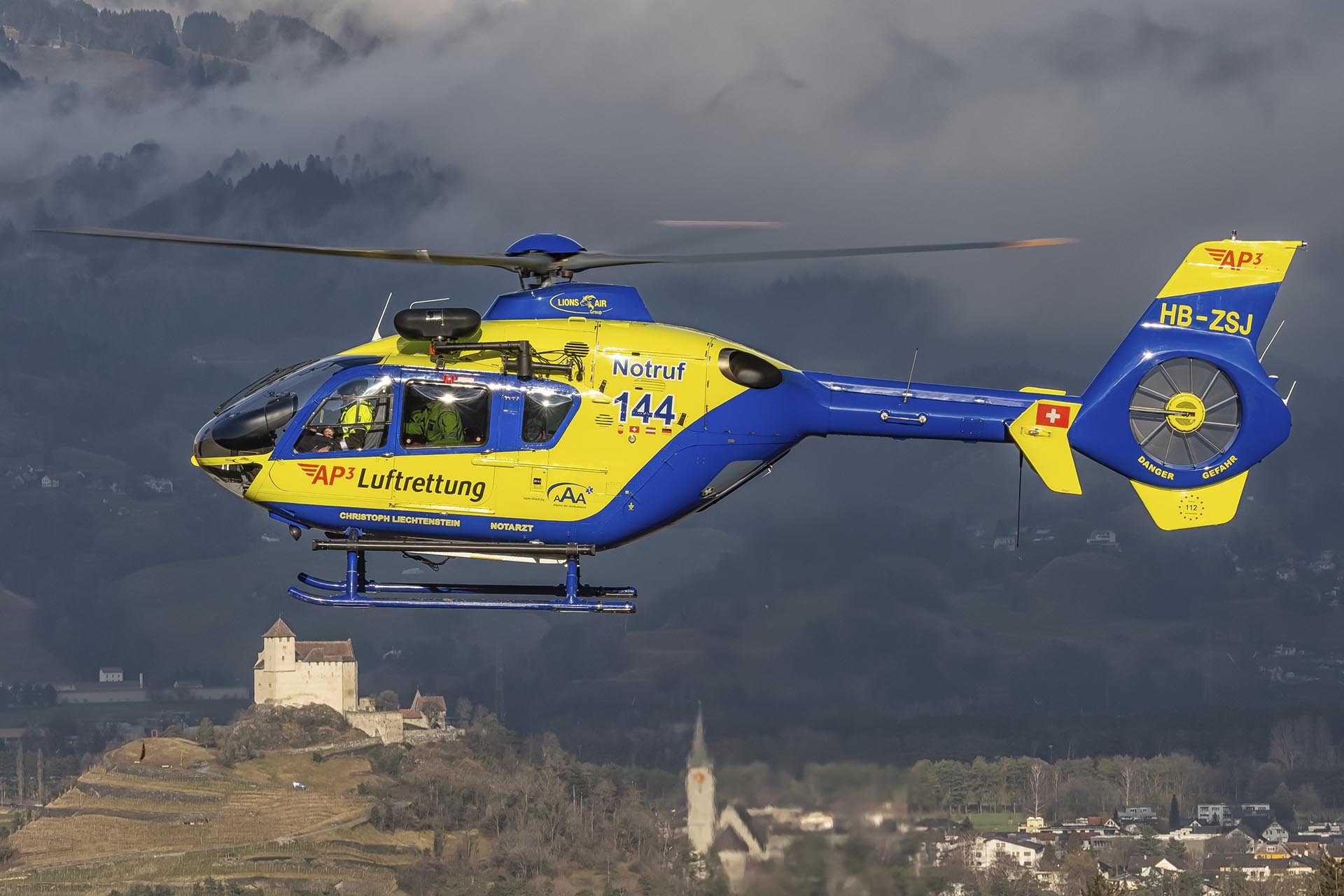International cooperation between several European agencies has resulted in the creation of a dedicated HEMS service based in Liechtenstein and carrying out HEMS missions into all the countries surrounding the tiny principality, as Jimmy van Drunen reports.
Whether in the freezing cold of winter or on blazing hot summer days, the crew of AP³ Luftrettung HEMS (helicopter emergency medical services) is always ready for duty. Lying between Germany, Austria and Switzerland, Liechtenstein is one of the smallest countries in the world but in the mountainous area around Balzers in the south of the country is a small heliport that already boasts over 3,000 helicopter landings since late 2018, and is the base for the Airbus H135 ‘Christoph Liechtenstein’ of the AP³ Luftrettung. The Swiss Air Rescue service ‘Rega’, the Alpine Air Ambulance (AAA) and the German DRF Luftrettung have been conducting rescues in the canton of Zurich since July 2018, and to improve cross-border activities, the German DRF Luftrettung (55%), the Austrian ARA Luftrettung (10%) and the Swiss Alpine Air Rescue AG (AAA) (35%) joined their efforts; thereby creating AP³ Luftrettung in 2017. The base in Liechtenstein has been active since December 2018 and is operated by AAA on a 24/7, 365-day basis, always ready for missions in the participating countries and airborne within three minutes during the day and within fifteen minutes at night. The ‘Christoph Liechtenstein’ carries medical specialists on board to assist with medical emergencies and AP³ Luftrettung conducted over 400 medical flights during 2019. Ninety percent of those flights were rescues, with many of those being longline operations, so AAA is looking back at a great first operational year.
The three partners have a lot in common in the air rescue arena; technical staff, maintenance, expertise and years of operational HEMS experience. They all fly modern, well-equipped rescue helicopters and have experienced aircrew and medical staff using the same types of medical supplies, rescue gear and usually even the same type of helicopter. The beloved Airbus H135 is a very good helicopter for mountainous areas and is the most frequently selected type in the air rescue industry worldwide, with a cruise speed of 250 km/h that allows it to be on station in a very short timeframe. The AP³ Luftrettung partners invest nearly two million Swiss francs annually in the operation of the service and there should be no additional costs for the Principality of Liechtenstein.

The goal of AP³ Luftrettung is to determine common standards and procedures, especially in the area of flight execution and medicine, which means that all participating countries use similar aircraft types. They provide internal education for their staff and training for emergency services so AP³ Luftrettung makes an important contribution to the improvement of emergency care in Germany, Austria, Switzerland and Liechtenstein. AAA also has an Airbus H135, ‘Lions1’, based in Birrfeld and operational since 2013, flying the same type of missions as the Balzers based aircraft and a spare H135 is available in case of maintenance needs or snags with the ‘Christoph Liechtenstein’. The crew of AP³ checks their gear twice a day. Medical supplies, rescue gear and oxygen tanks are inspected, while the medical monitor, batteries and defibrillator all need to be fully charged. The pilot checks the helicopter over during a walk-around before every flight, looking for oil leakage, birds nests in the engines and other problems or damage.
Persons in need can dial the number 144 for help in the Alps area, with a high probability that they will then see the blue and yellow helicopter approaching over the horizon and hear its Pratt and Whitney engines echoing in the mountainous area as it closes the distance. AP³ Luftrettung’s tasks are primary emergency medical care, inter-clinical transports and organ transport, so whether it’s a person falling down the stairs at home or a car crash somewhere in a village, the H135 is fully equipped for the mission.
The entire rescue chain and medical care in Switzerland and Liechtenstein is generally managed via the 144 emergency call centers, which alert appropriate professional emergency services. AP³ Luftrettung is part of this rescue chain, consisting of many participants that include first aiders, the police department, fire brigade and air or ground-based rescue organizations. AP³ Luftrettung is deployed directly via the operations centers in Germany and abroad, saving a lot of time and guaranteeing the emergency call centers a complete overview, or can also be mobilized through the Swiss ‘Rega’ operations center. I visited Balzers Airport in early 2020 for a winter training session with AP³ Luftrettung’s ground and aircrew. About fifty ground and air crewmembers participated in the one-day exercise, which was held on a nearby mountain and consisted of a number of different scenarios. Longline rescue training was conducted in a densely wooded area at a higher location and rescue ground crews were transported in small groups to various locations. AP³ Luftrettung performs multiple exercises each year, honing different operations with a number of participant organizations and crews train monthly on various scenarios with a variety of external units and agencies, such as police and ambulance, to be always prepared for any kind of HEMS or rescue operation.

Full facilities are available to the AP³ Luftrettung crews on the well-equipped base at Balzers, where sleeping quarters, administrative offices and rest/recreational areas are all provided and each AP³ Luftrettung three-person HEMS crew is ready to work around the clock. The helicopter has been capable of flying long line operations during night hours since the unit began, and pilots wear night vision goggles during night operations. Once a week, the AP³ Luftrettung will fly a night mission. Crews consist of a pilot, an emergency doctor and a paramedic HEMS-TC (helicopter emergency medical service technical crewmember). The pilot’s task of flying the helicopter safely in the hardest of conditions is not easy in rough terrain like the Alps, where the strong and variable wind conditions play a major role. The paramedic’s task is to bring the patient to a safer, more comfortable position and he supports both the pilot and the physician. While the doctor is stabilizing and treating the patient, the pilot is heading off to the nearest hospital. Including part-time workers, the unit’s staff numbers twenty and includes several ex-air force members, all of whom are very experienced in these kinds of operations so whether it be a traffic incident in Germany, a fallen mountain climber in Switzerland or a missing person in Austria the crews of AP³ Luftrettung are always ready.
Seasonal variations
Demand for their highly trained skills is common during winter, when the AP³ flies many rescue missions in winter sport areas that require landing on sloping terrain or performing a rescue mission from the hover position with a long rescue line. The onboard mountain rescue crewmember is trained for operations like this; performed when the helicopter isn’t able to land nearby the victim. He slides from the helicopter with a long thin metal line down to the victim. When a person falls down a slope while skiing, the mountain rescue workers will bring the victim to a place where the helicopter is able to land safely and the crew is trained to land on snow-covered ground with the potential of white-out, in which the snow obscures the view for the crew, and they don’t have a clear view on their landing spot. Most of the winter missions are flown in the Alps for fallen skiers or other snow-related accidents but the Alps are rough, challenging terrain in either winter or summer. During the summer AP³’s crews fly multiple types of missions; fallen mountain bikers or walkers, traffic incidents or other special medical cases. The on-duty desk operator decides whether AP³ needs to come into action for any given incident and will often call not only the helicopter but an ambulance as well when it’s needed. This way all medical assistance is nearby.
Aircraft and equipment
t t
The H135 HB-ZSJ is equipped with multiple rescue systems to assist in a variety of potential rescue situations. Its hoist enables winch
rescues, for example, in the mountains and to make these types of operations easier for the pilot, a bubble canopy was fitted in 2019,
enabling the pilot to look directly down during hoisting or while landing in rough or dense terrain. The aircraft also has a dual-hook
system for transporting cargo or a victim under the belly of the helicopter (human external cargo or HEC) when the winch line isn’t long
enough. Aside from the rescue equipment, AP³’s H135 also boasts onboard medical devices and equipment embodying the latest technology.
Respirator, portable defibrillator and monitoring unit, oxygen bottles, syringe pumps and many medicines are carried, making the helicopter
ideally equipped for the rough terrain in this mountainous area. The full night flight capability offered by NVG operation means that
‘Christoph Liechtenstein’ is often called out to operations in Germany at night, because many German aid stations are only operational
during the day. Alongside the rescue and medical missions, the helicopter is also suitable for transport between hospitals and
transplantation organ transport flights as it is equipped with a sliding door on either side and its modern and advanced equipment enables
it to carry one or two stretcher-borne patients on board.

The location at Balzers is well suited for missions into all the bordering countries and their citizens benefit from the responsive
emergency assistance from the air. Ambulances in the region are often too slow or can’t get to the patient because of their location, so the
helicopter is used frequently and its early arrival can often prevent increasing trauma by bringing a specialized doctor to the scene.
 HOME
HOME


